Our Library
Explore our publications, from research papers and series to educational materials, covering all aspects of conflict transformation and peace promotion.

The FMLN and Post-War Politics in El Salvador: From Included to Inclusive Actor?IPS Paper No. 14
Twenty-two years after the signature of the Peace Accords, the Front has the greatest share of power in the country: first, as a legal and legitimate party that can aspire to each and every one of the popularly elected positions from which it is possible to carry out the expected changes; and secondly, as the governing party – after winning the presidential elections for a second time and having obtained several mayorships, as well as ample and at times majority presence in the Legislative Assembly.
- Year2015
- Author(s)Carlos Guillermo Ramos, Roberto Oswaldo López, Aída Carolina Quinteros
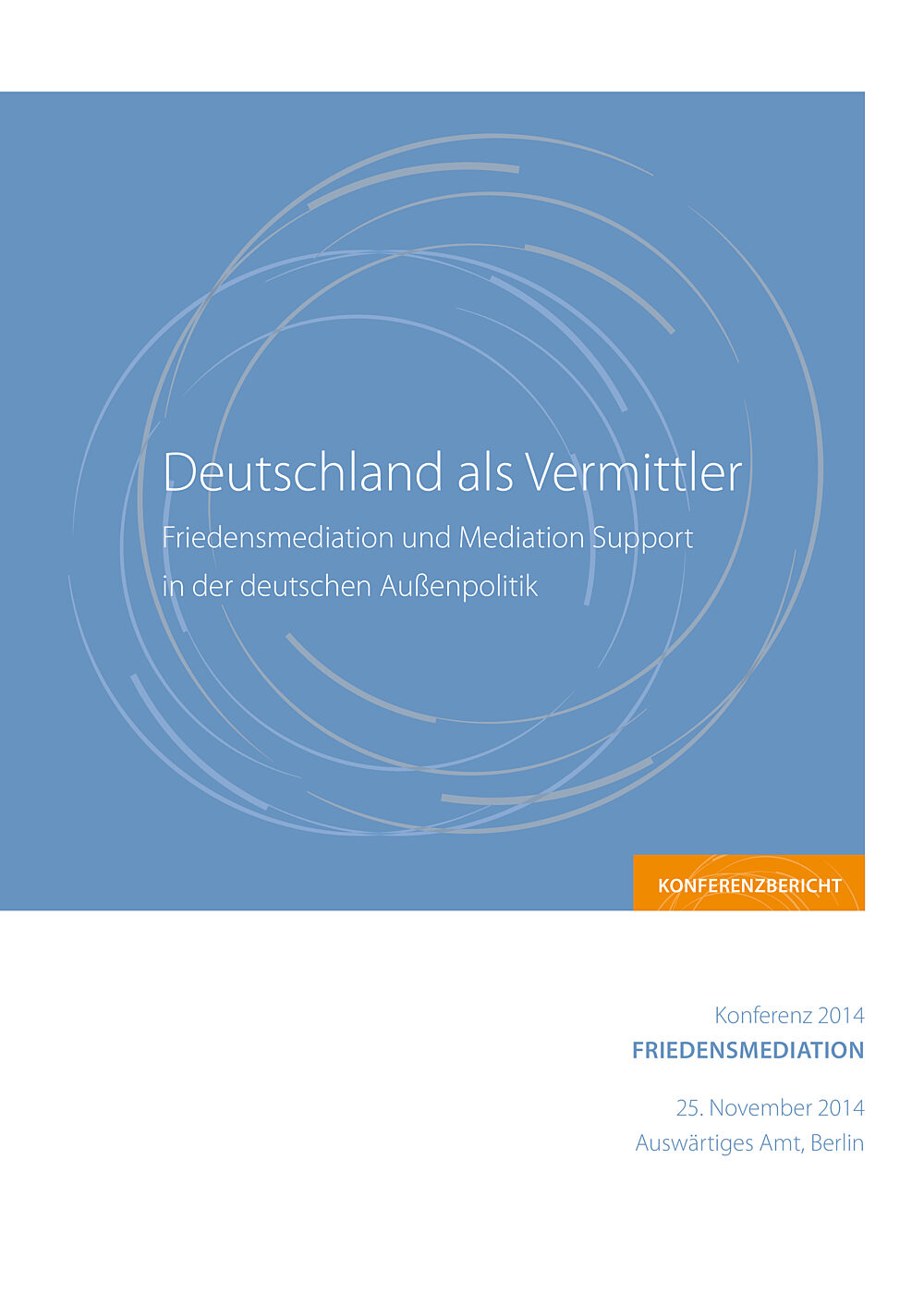
Deutschland als Vermittler: Friedensmediation und Mediation Support in der deutschen AußenpolitikKonferenzbericht
Was ist Friedensmediation und Mediation Support? Welche Rolle kann Deutschland in diesem Bereich spielen? Diese Fragen standen im Mittelpunkt der Konferenz Friedensmediation 2014. 200 politische Entscheidungsträger, Mitarbeiter relevanter Ministerien sowie Parlamentarier und Vertreter der im Bereich Friedensmediation tätigen Organisationen tauschten sich darüber aus. Ziel der Konferenz war es, das außenpolitische Profil Deutschlands als Konfliktvermittler sichtbar zu machen und weiter zu schärfen. Auf Basis einer gemeinsamen Bestandsaufnahme zum deutschen Engagement im Bereich der Friedensmediation erarbeiteten die deutschen und internationalen Experten Vorschläge, wie enger zusammengearbeitet und besser voneinander gelernt werden kann.
- Year2015
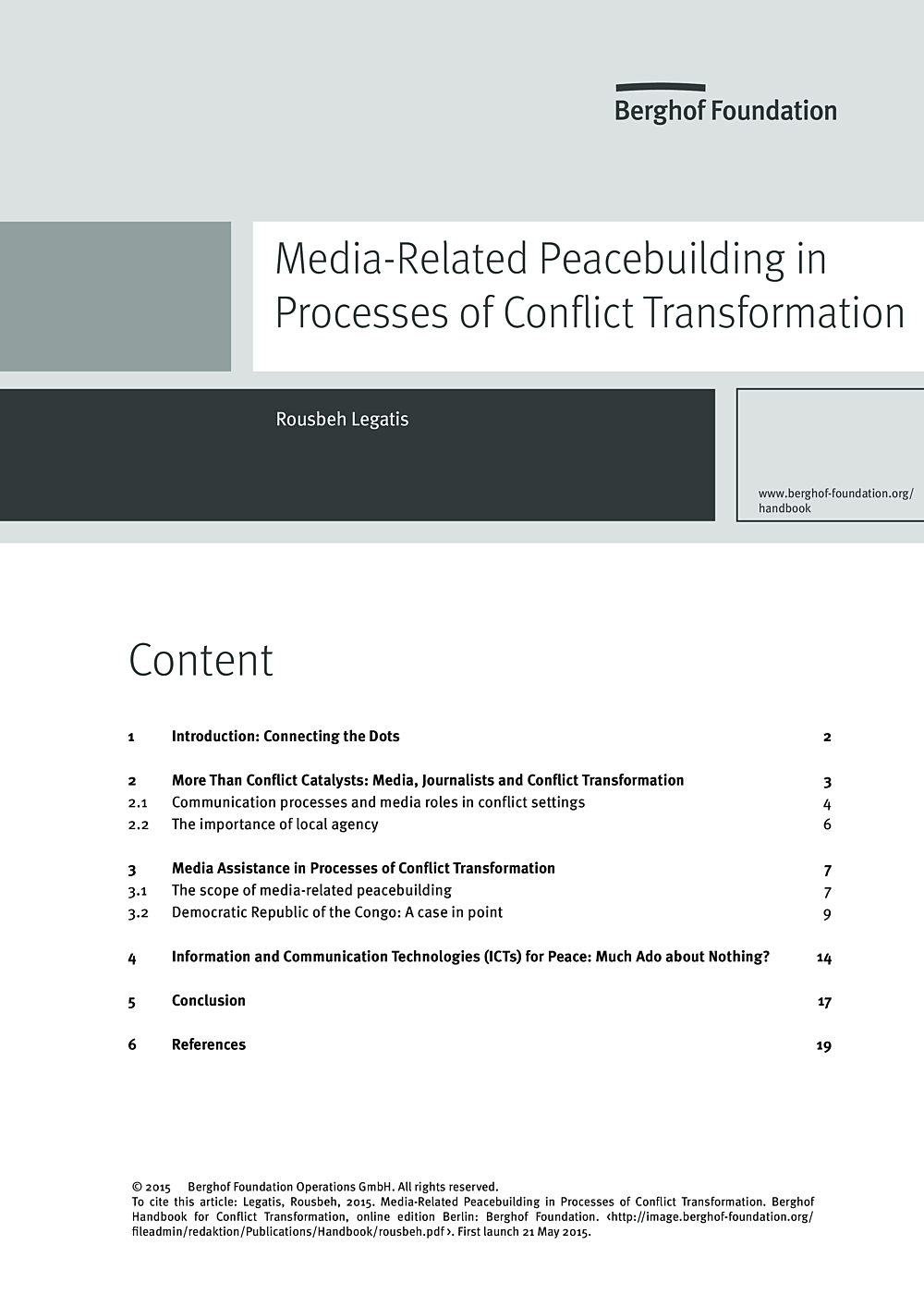
Media-Related Peacebuilding in Processes of Conflict TransformationHandbook Article
Focusing on their constructive potential, the author contextualises the work of media and journalists as actors in peacebuilding processes. He draws on examples from the DRC and Sudan, and discusses the added value of new technologies, in reflecting on how peacebuilding processes can be opened up and made more inclusive - especially locally - by high-quality reporting.
- Year2015
- Author(s)Rousbeh Legatis
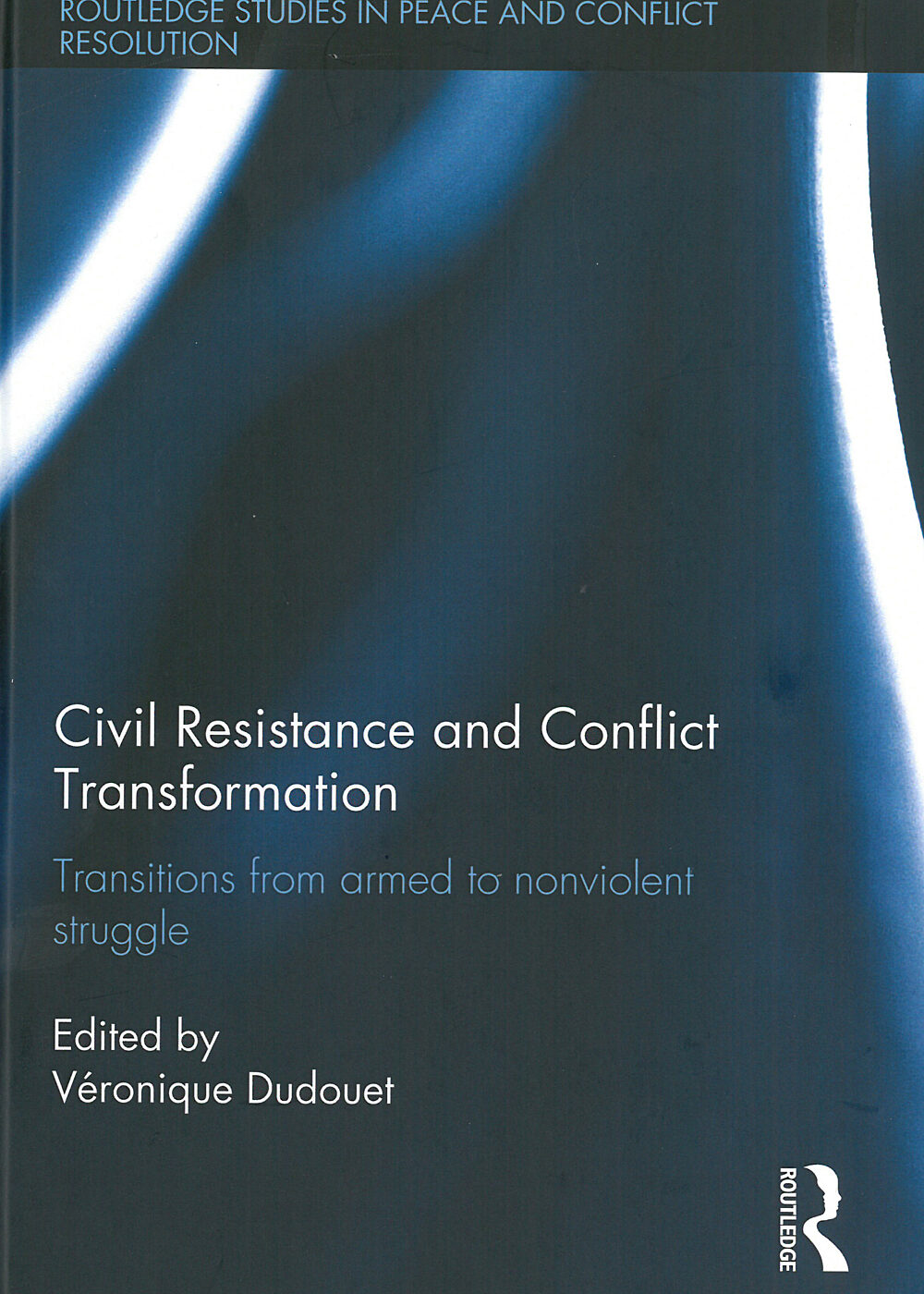
Civil Resistance and Conflict TransformationTransitions from armed to nonviolent struggle
This book compiles conceptual and empirical insights on the decision-making process, rationale and determining factors which underlie the strategic shifts undertaken by armed movements towards nonviolent struggle for self-determination or regime change.
Bringing together academics from various disciplinary traditions the book offers a wide range of case studies – including South Africa, Palestine and Egypt – through which to view the changes from violence to nonviolence within self-determination, revolutionary or pro-democracy struggles.
- Year2015

State Reform after the Peace Accords: Negotiating and Implementing an Inclusive Political Settlement in El SalvadorIPS Paper No. 13
This paper reviews the historical dynamics of the conflict and the peace process between the FMLN and the Salvadoran state, before analysing the main phases and actors of the informal and formal negotiations. The paper further seeks to determine what the Salvadoran population can possibly expect from the scope of the 1992 Accords more than two decades after they were signed by examining to what extent the needs of the marginalised groups most affected by the political, economic and social situation prior to the war have been taken into account in the accords and their implementation.
- Year2015
- Author(s)Roberto Oswaldo López, Aída Carolina Quinteros, Carlos Guillermo Ramos
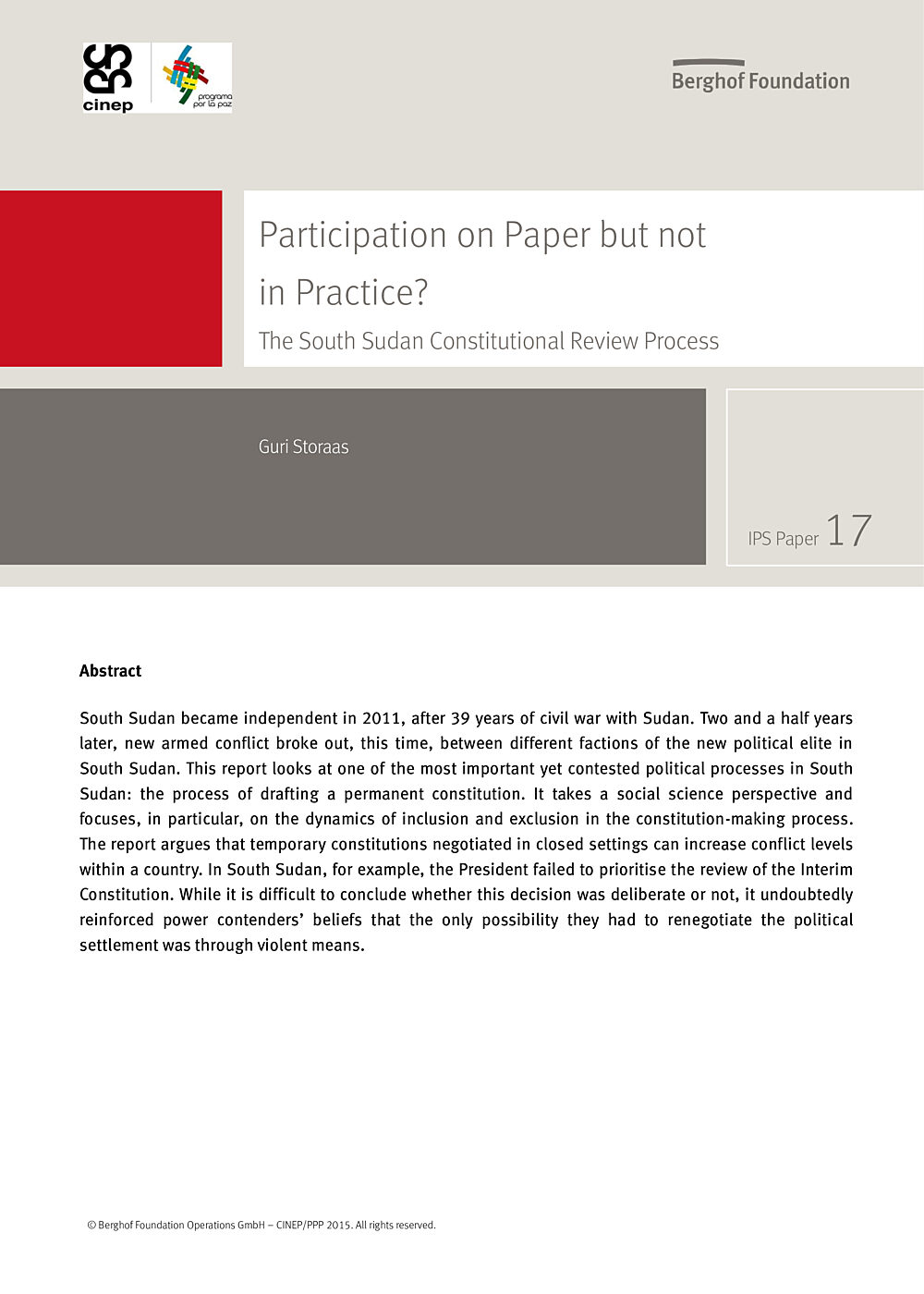
Participation on Paper but not in Practice? The South Sudan Constitutional Review ProcessIPS Paper No. 17
This report looks at one of the most important yet contested political processes in South Sudan: the process of drafting a permanent constitution. It takes a social science perspective and focuses, in particular, on the dynamics of inclusion and exclusion in the constitution-making process. The report argues that temporary constitutions negotiated in closed settings can increase conflict levels within a country.
- Year2015
- Author(s)Guri Storaas
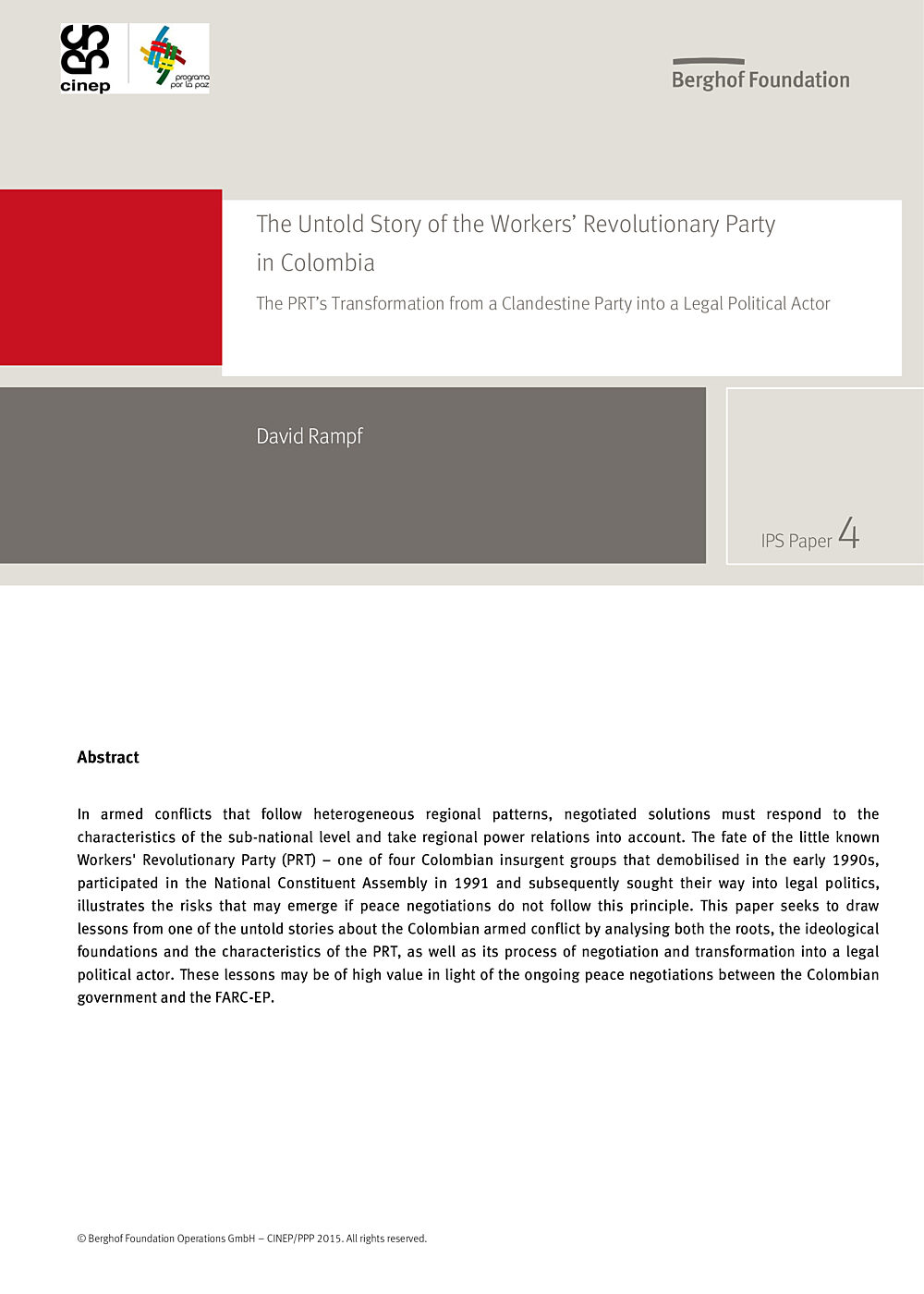
The Untold Story of the Workers’ Revolutionary Party in Colombia. The PRT’s Transformation from a Clandestine Party into a Legal Political ActorIPS Paper No. 4
This paper seeks to draw lessons from one of the untold stories about the Colombian armed conflict by analysing both the roots, the ideological foundations and the characteristics of the PRT, as well as its process of negotiation and transformation into a legal political actor. These lessons may be of high value in light of the ongoing peace negotiations between the Colombian government and the FARC-EP.
- Year2015
- Author(s)David Rampf

There is no way around itWe need strong teams for working on fragile and conflict contexts
Working on fragile or conflict contexts is different from work in other projects. The consulting team of a GIZ programme and the individual consultants have to deal with security issues as well as with their own emotionality. National consultants’ personal histories are interlinked with specific conflict issues and actors. This emotionality and how consultants deal with it plays an important role when the consultants interact with the client systems and within their own consulting team. The consultants need to be aware of their own backgrounds and of how to keep the necessary distance to the clients. To deal with tensions and conflicts in the team and rather create a constructive and supportive working atmosphere, the GIZ project or programme manager and the team can strengthen their skills of self-reflection, communication, feedback, peer consulting, and other necessary technical and methodological skills.
- Year2015
- Author(s)Uta Giebel, Barbara Unger
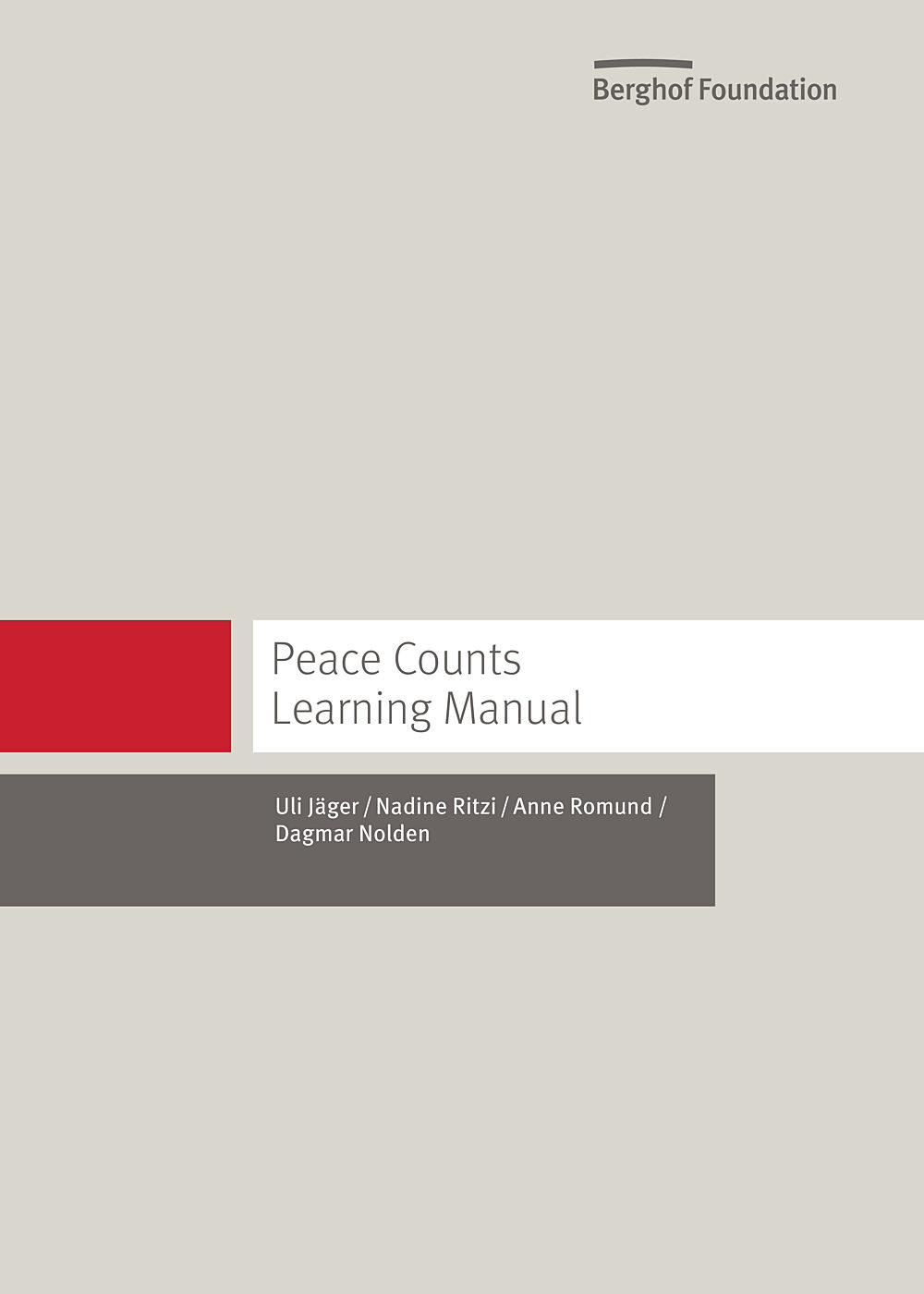
Peace Counts Learning Manual
The Peace Counts Learning Package was developed in the framework of the project Peace Counts. It is directed to multipliers of peace education who would like to work with stories of peacebuilders around the world.
- Year2015
- Author(s)Uli Jäger, Nadine Ritzi, Anne Romund
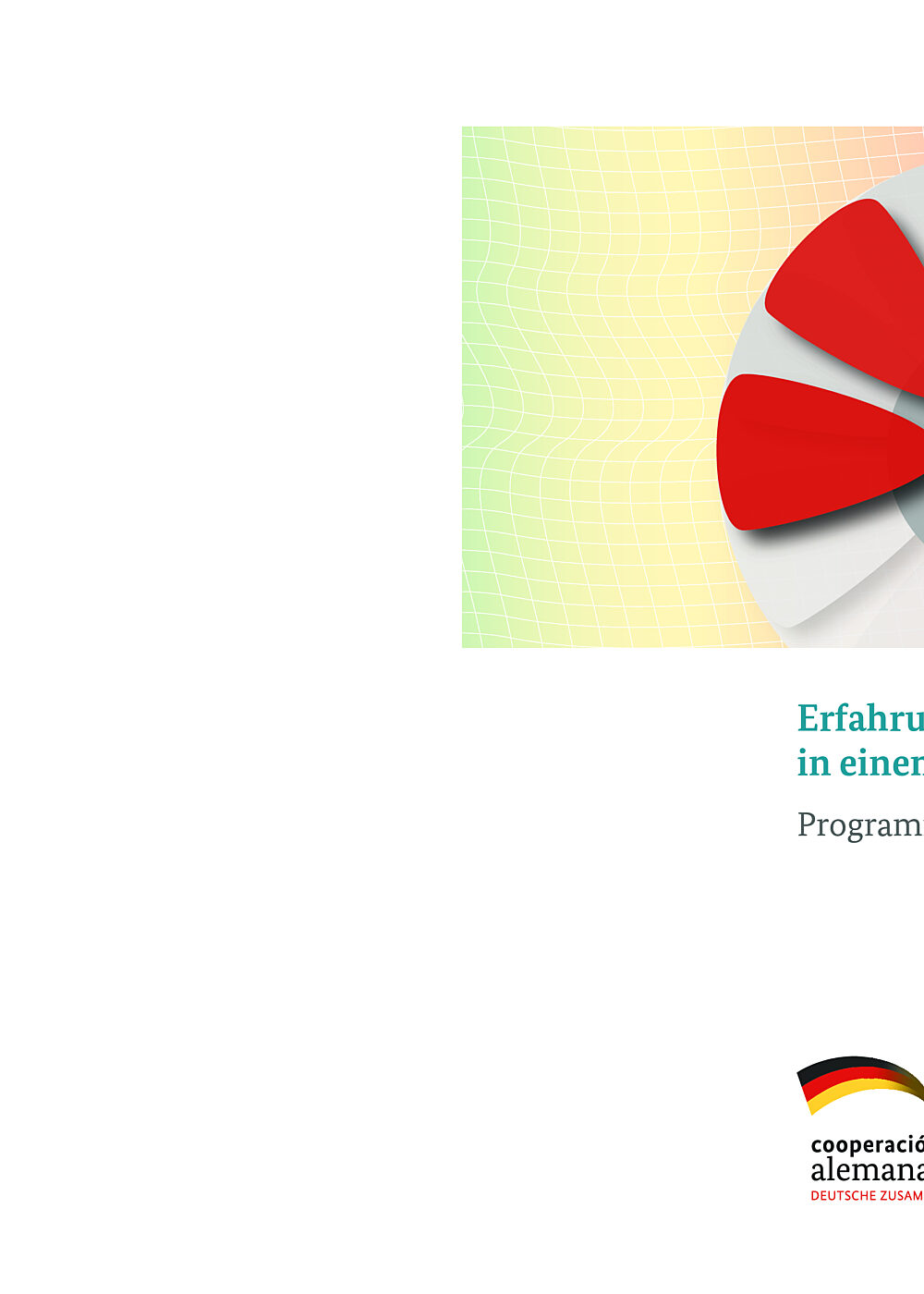
Erfahrungen zu Steuerung und Führung in einem FriedensentwicklungsvorhabenProgramm Cercapaz 2007 – 2015 / Kolumbien
„Wenn wir die Zeit zurückdrehen könnten, was würden wir mit unserem heutigen Erfahrungsschatz anders machen?“ „In acht Jahren (2007-2015) wurden im Programm Cercapaz knapp 30 Millionen Euro umgesetzt. Welche Potenziale wurden genutzt und welche hätten wir noch besser nutzen können?“ Diese und ähnliche Fragen stellen sich Beteiligte des Programms Cercapaz in dessen Schlussphase. Auch wenn es das deutsch-kolumbianische Friedensprogramm Cercapaz in dieser Form nicht mehr geben wird, können jedoch ähnliche Vorhaben aus den Erfahrungen lernen, indem sie gute Ansätze übernehmen und Fehler vermeiden - und somit die Chance erhöhen, mit den ihnen zur Verfügung stehenden Mitteln möglichst viel positive Veränderung zu erreichen. Die GIZ hat den Anspruch, eine lernende Organisation zu sein. Dieses Dokument soll einen Beitrag dazu leisten, indem es Impulse zur Reflexion und Diskussion gibt.
- Year2015
- Author(s)Uta Giebel, Barbara Unger